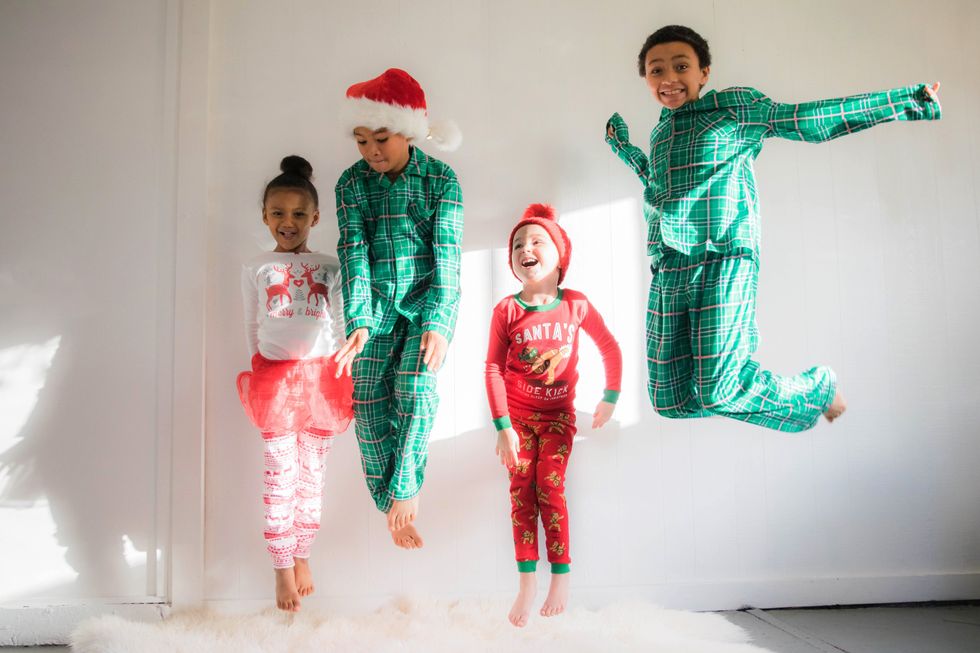Traditional Filipino dance is a unique hobby, yet an important one. Especially if you're of Filipino, Asian, and/or Pacific Islander descent, Filipino dance is an important way to share your culture with others. Read on to see some of the more quirky elements that come with this form of dance.
1. Your feet are constantly dirty (Bonus points if they're bleeding!
It's no secret that rural dances such as tinikling and maglalatik require that you dance barefoot in the studio and on stage. Even though the hard floors are mopped daily, waltzing for hours causes your feet to develop brown or gray shadows with dirt and dust. Even worse if you're doing a dance with glass props (cough cough binasuan and pandanggo sa ilaw). Drops are almost inevitable, all you can do is pray that the glass doesn't fragment and find itself in your heels! Which brings us to the next sign...
2. You never expect to stay dry through a "binasuan" performance.
When you balance glasses of water on your head and hands while rolling on your stomach, spinning in circles, and twisting your arms around yourself, you know that binasuan is one of the dances that require the most skill in traditional Filipino dance. But none of us are perfect, and all of us have our off-days. Until the last note of the song plays, expect for your head-glass to tip and for water to drip down your head and back (and only yourself, if you're lucky).
3. Setting spray and hair spray are your two best friends.
It's a trade secret that the key to your head being a viable surface for glasses and candles is to spray the top so that the surface has a lot of traction. Even if you're not performing a balancing dance, a good amount of setting spray on your face is needed so that the bright lights on your stage makeup don't create an oily, shiny mess.
4. You horde bobby pins and hair ties like they're a form of currency.
If you're a person with long hair, it's not only necessary that you put your hair in a traditional bun, but it's also necessary that the bun can withstand leaping in the air, balancing things on your head, and a rough quick-change. Because of this, you always keep bobby pins close by to capture any flyaways.
5. The "bahag" causes blushes and giggles for all in the room.
Yes, it is the dignified traditional garment of Filipino tribal men since the beginning of time. Yes, it is an honor to participate in indigenous arts to prevent them from being lost to colonialism. No, your cannot hide your smile when the guy you constantly make fun of, have class with, or have a crush on dons the patterned loincloth. The costumes do have their perks though, because...
6. You love wearing the traditional dresses.
The butterfly tops and quaint skirts in the rural dances. The flowing silk and intricate headdresses of the Muslim/Mindanao dances. The beautiful handwoven patterns and colorful necklaces of tribal dances. And, most complex of all, the large petticoats, lacy sleeves, stiff shawls, and all-around royalty of the Maria Clara dresses found in Spanish dresses. If you're a person that wears dresses, you always get an excited jitter in your stomach when you get to perform the set with your favorite type of costumes.
7. Don't worry, you're used to being on-camera.
You love taking pictures in your traditional costume, especially if it's from your favorite set! You always make sure to pose (smile, squad, and candid of course) with your friends, your dance partner, and with the group before you pack everything up for the night. Pictures aren't only for you, the nanays in the crowd with their iPads love getting an unexpected shot, so you make sure to put on your best face throughout the entirety of the performance.
8. It's always a struggle to find a good ratio of male-to-female dancers.
Even though your complete list of performers is well equipped with both male and female dancers for partner pieces, something always comes up for each specific performance that throws the ratio out of whack. Either the dominant gender has to do an all-male or all-female dance, or the less-represented gender will have to do double-time to be someone's partner for every single dance. This can lead to our next point:
9. Performances are your personal work-out.
Carrying the heavy props, instruments, and costume bags to the far-away and hard-to-reach dressing room. Holding your body in the same position for sometimes half of the dance. Carrying other people in your arms and sometimes on your shoulders. Along with dancing for hours on end (breaks don't exist, that's your time to change costumes) consistent traditional Filipino dance is both weight training and cardio. And you love it, because...
10. It's more than just a dance to you.
Traditional Filipino dance isn't just a couple hours out of your week to appease your parents, add a cultural aspect to your resume, or meet Filipina girls. It's how you've met your closest friends. It's how you grew to have an intrinsic work ethic and a standard for excellence. It's how you fight to demonstrate your culture when it is so constantly being marginalized by the colonial mentality. It's how you learn where you came from, and where you figure out where you're going. In the end, the small struggles listed in this article are nothing compared to the gift and blessing that is being able to perform traditional Filipino dance.
'Sayaw' is the traditional Filipino dance troupe at the University of Washington.This article is dedicated to the Sayaw Coordinator of 2015-2016 and Class of 2016 graduate, Dennis Mojica. #sayawforevs









































